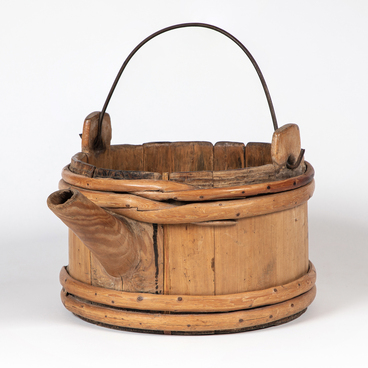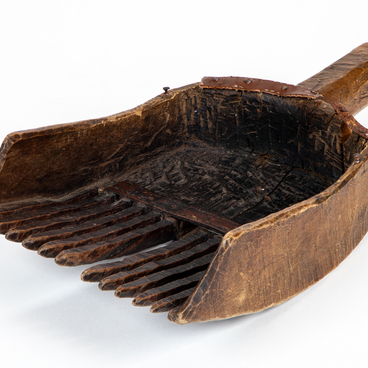The collection of the Sheltozero Veps Ethnographic Museum named after Rurik Petrovich Lonin features a loom donated to the museum by a resident of the village of Sheltozero, Pyotr Egorovich Shishov. The manufacturer of the loom is unknown, but most likely the loom was made at the end of the 19th century.
Traditionally, the female occupation of the Veps in the second half of the 19th — early 20th century was the processing of flax: breaking, separating from shives, heckling, carding, spinning threads, weaving. The whole process was done manually and was very laborious. The Veps usually started breaking flax from the Feast of the Intercession (October 1), then they heckled and carded it.
Several varieties of tow (kjžalpā) were produced from flax. The lowest-grade material was rags (kapked): it was used to teach girls to spin, which sometimes started at the age of four. The rags contained a large amount of hard shives, so the girls often rubbed their fingers in blood when spinning their first spindle. Showing it to her mother, the girl could count on getting her own spinning tool. From the flax tow of a similar low quality (rotmed) yarn was made, which was used to make fabrics for work pants and long loose gowns (balahons). Better materials — paicoset — were used for yarn intended for long underwear and blankets. The thinnest product, linen itself (pǒüvāz), was used for sewing towels, women’s chemises and other underwear.
The threads were made by twisting using a a spindle (süŕa). The weaving was usually done by adult women. A horizontal loom was installed in the clean or master’s half of the house by the window, and weaving began immediately after Maslenitsa. From the finished canvas, in a traditional way, women manually cut and sewed clothes, trying to make as many things as possible before the start of spring field work.


